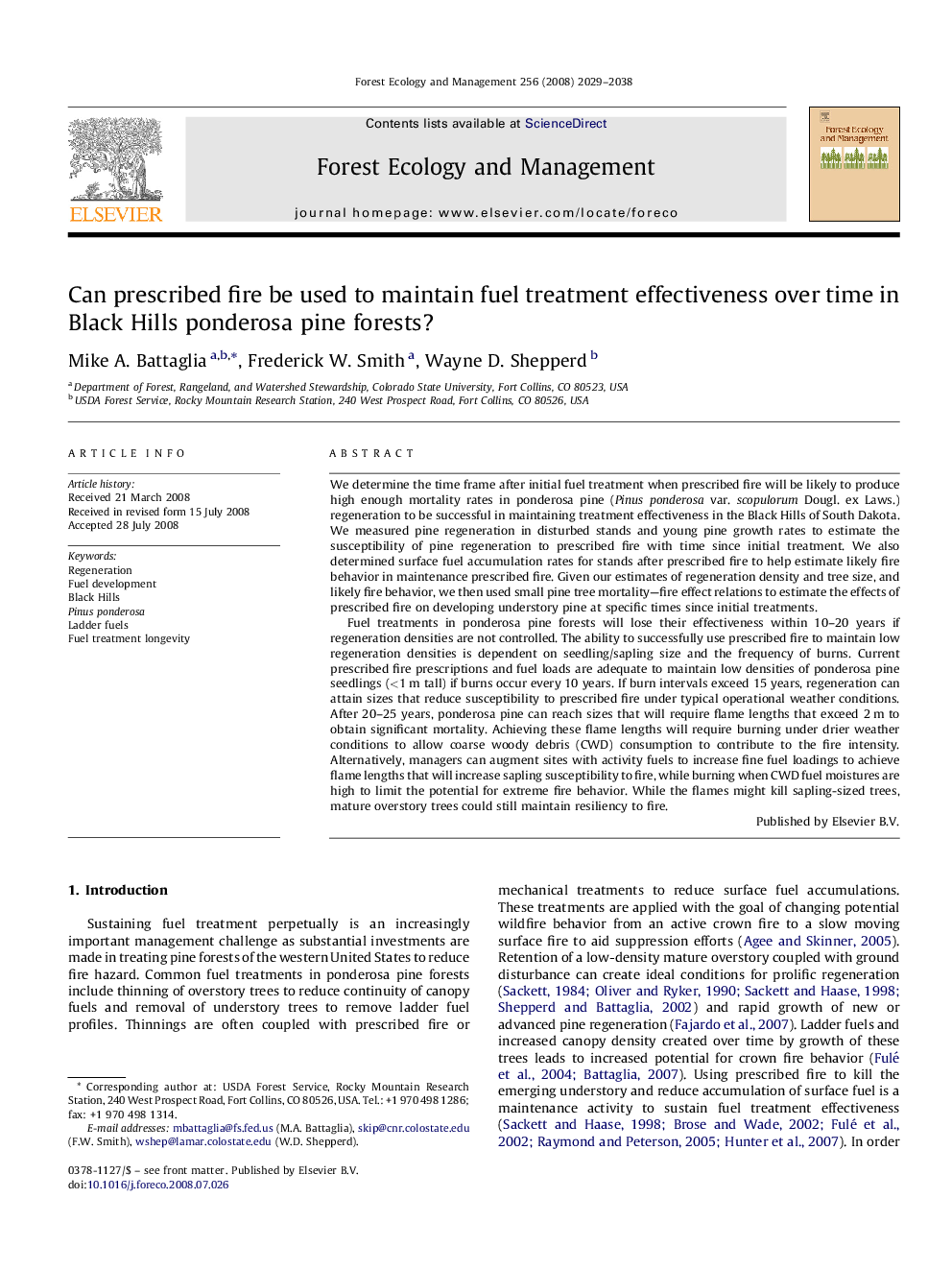| Article ID | Journal | Published Year | Pages | File Type |
|---|---|---|---|---|
| 89239 | Forest Ecology and Management | 2008 | 10 Pages |
We determine the time frame after initial fuel treatment when prescribed fire will be likely to produce high enough mortality rates in ponderosa pine (Pinus ponderosa var. scopulorum Dougl. ex Laws.) regeneration to be successful in maintaining treatment effectiveness in the Black Hills of South Dakota. We measured pine regeneration in disturbed stands and young pine growth rates to estimate the susceptibility of pine regeneration to prescribed fire with time since initial treatment. We also determined surface fuel accumulation rates for stands after prescribed fire to help estimate likely fire behavior in maintenance prescribed fire. Given our estimates of regeneration density and tree size, and likely fire behavior, we then used small pine tree mortality—fire effect relations to estimate the effects of prescribed fire on developing understory pine at specific times since initial treatments.Fuel treatments in ponderosa pine forests will lose their effectiveness within 10–20 years if regeneration densities are not controlled. The ability to successfully use prescribed fire to maintain low regeneration densities is dependent on seedling/sapling size and the frequency of burns. Current prescribed fire prescriptions and fuel loads are adequate to maintain low densities of ponderosa pine seedlings (<1 m tall) if burns occur every 10 years. If burn intervals exceed 15 years, regeneration can attain sizes that reduce susceptibility to prescribed fire under typical operational weather conditions. After 20–25 years, ponderosa pine can reach sizes that will require flame lengths that exceed 2 m to obtain significant mortality. Achieving these flame lengths will require burning under drier weather conditions to allow coarse woody debris (CWD) consumption to contribute to the fire intensity. Alternatively, managers can augment sites with activity fuels to increase fine fuel loadings to achieve flame lengths that will increase sapling susceptibility to fire, while burning when CWD fuel moistures are high to limit the potential for extreme fire behavior. While the flames might kill sapling-sized trees, mature overstory trees could still maintain resiliency to fire.
